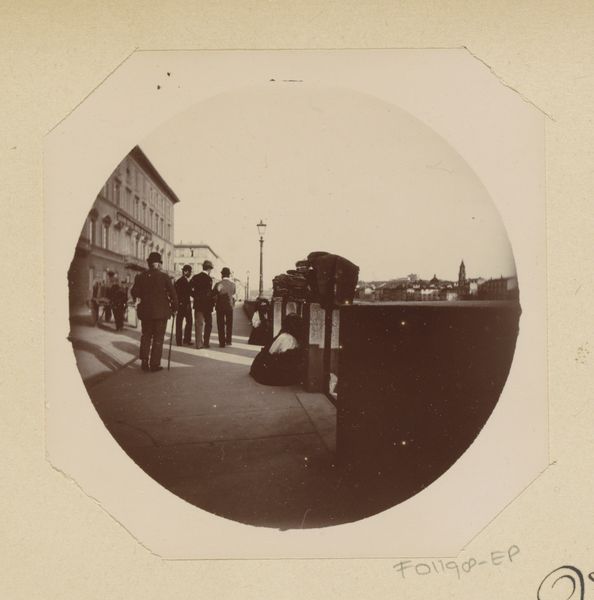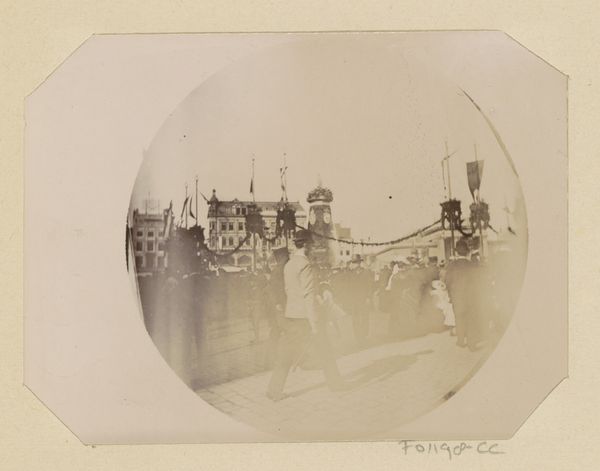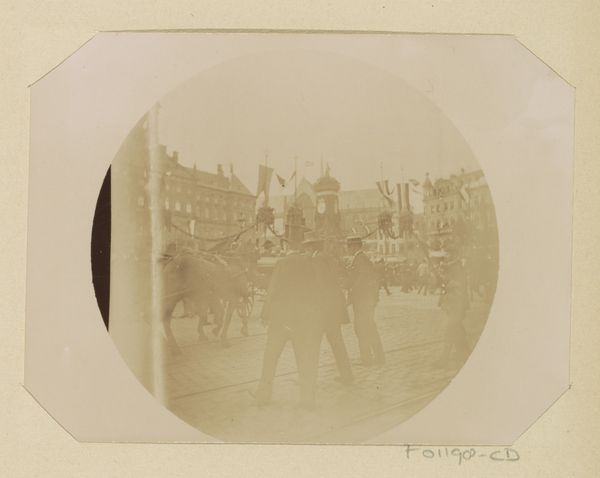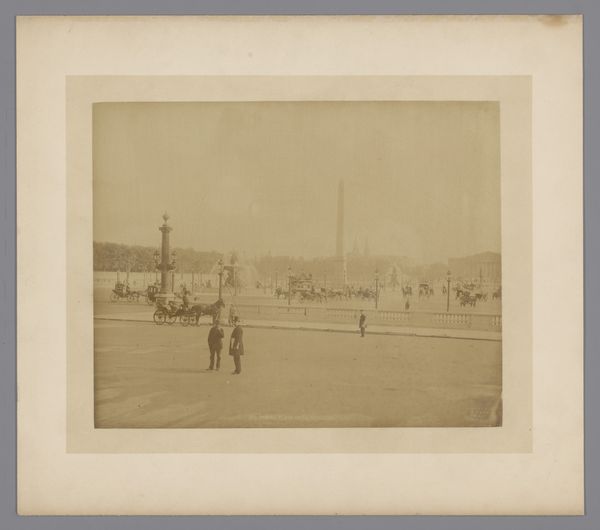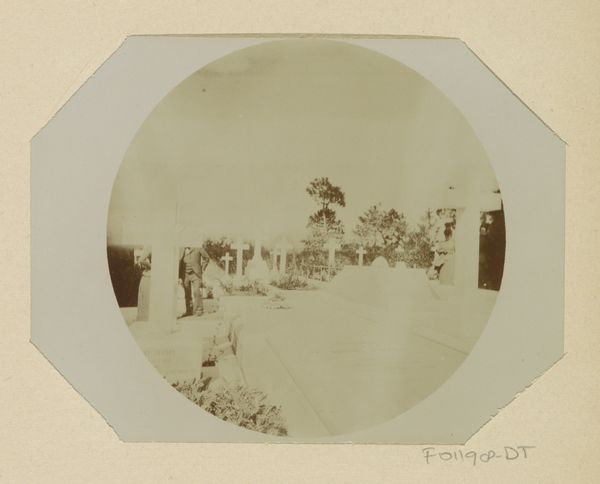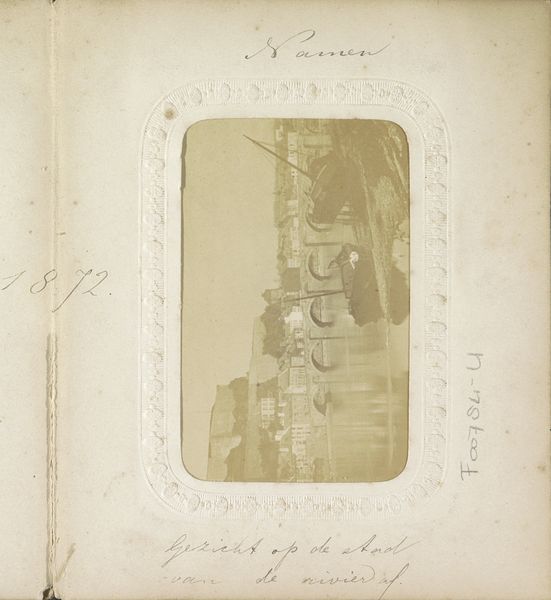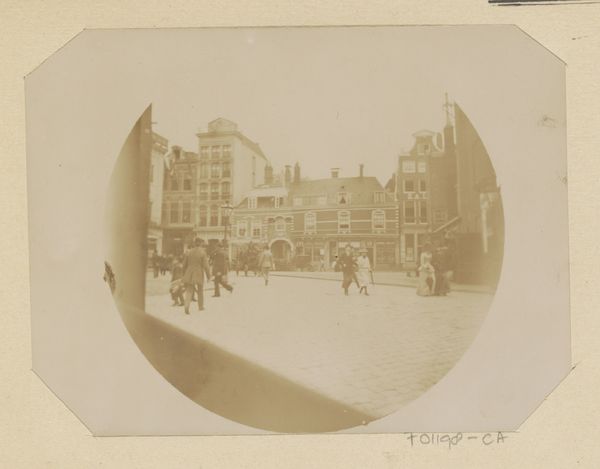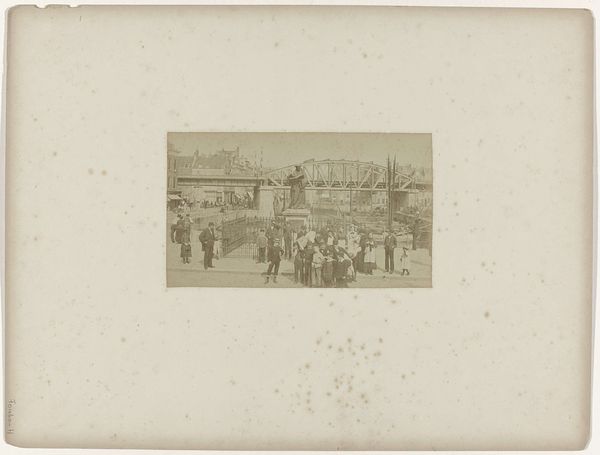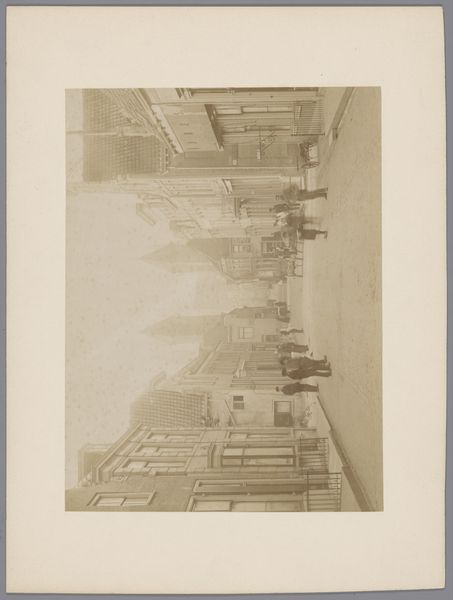
Gezicht op de Dam tijdens het bezoek van keizer Wilhelm II van Duitsland 1889 - 1893
0:00
0:00
#
photo of handprinted image
#
yellowing
#
aged paper
#
pastel soft colours
#
photo restoration
#
light coloured
#
white palette
#
archive photography
#
square
#
soft colour palette
#
watercolor
Dimensions: height 99 mm, width 98 mm
Copyright: Rijks Museum: Open Domain
Editor: This photograph by Johanna Margaretha Piek, dating from around 1889 to 1893, shows a view of the Dam square in Amsterdam during the visit of Kaiser Wilhelm II of Germany. It has a soft, almost dreamlike quality. What catches your eye about this image? Curator: What immediately stands out is the performance of power. We see a staged event – the Kaiser’s visit. How does this photograph participate in constructing a public image of both the German Empire and the Netherlands at that time? Think about what such an orchestrated public display communicates politically, not just about the relationship between these nations but also to the Dutch population itself. Editor: So, it's less about the actual visit and more about what it represents? Curator: Precisely. Consider the perspective chosen. The photographer situates us, the viewers, amongst the Dutch populace, experiencing this grand display of power alongside them. The architecture of the Dam – the Royal Palace, the Nieuwe Kerk – are also prominent, symbolizing Dutch heritage and sovereignty even as it’s being presented to, and arguably subtly overshadowed by, Wilhelm II’s presence. Editor: That makes me see the image differently. It's not just a record, but an active participant in the power dynamics of the time. What about the light? Is that an aesthetic choice? Curator: The soft light and sepia tones contribute to a sense of historical distance, a romanticised past. But, practically, this photographic process also served to “filter” the presentation of the visit in line with accepted contemporary social more. How would the public respond differently to a sharp black-and-white image? This is what the cultural norms of viewing permit and celebrate. Editor: I hadn't thought about it that way, as a kind of social tool, too! So the photograph isn't neutral, but shapes the narrative around this historical moment. Thank you, that really opened up the image for me. Curator: Indeed, by interrogating these historical artefacts, we better understand the complex social, cultural and political structures that governed the late 19th century.
Comments
No comments
Be the first to comment and join the conversation on the ultimate creative platform.
